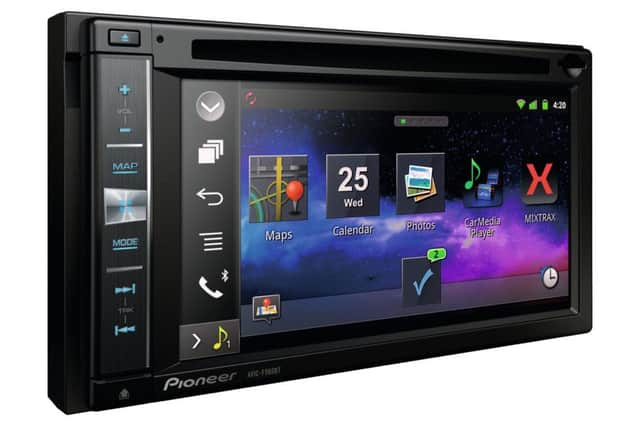Tech Talk: Making your phone talk to your car stereo


That’s why we have so many competing and non-compatible technologies - from integrated Bluetooth receivers to plug-in chargers and audio cables. All of them work, in one way or another, but some solutions are more connected than others.
Today’s phones are capable of far more than making and receiving calls, with or without hands. They can stream music wirelessly to your car speakers and act as a sat nav and traffic warning system, all at the same time, if necessary. But you will need a fairly sophisticated in-car unit to accomplish it all.
Advertisement
Hide AdAdvertisement
Hide AdHands-free calling is perhaps the most fundamental use for your phone while you’re on the move. You can use a plug-in cradle, but Bluetooth is a better option altogether. Almost all phones support it, and if your car radio doesn’t, you can swap it over for around £50. If you’re lucky, the cables will plug straight into the new one; if not, look on Ebay for an adapter. Once installed, the radio will “pair” itself with your phone, and incoming calls will be heard through your car speakers. But because Bluetooth works without wires, it doesn’t charge your phone - on the contrary, it discharges it alarmingly quickly - so it’s not a complete solution. A USB cable from your phone to the car’s lighter socket will help.
The basic Bluetooth specification doesn’t let you stream music wirelessly, so if you’re buying a cheap stereo, check its features carefully. The best units will handle music as well as calls and also let you import your phone’s address book and display it on screen.
If you have an Apple or Android phone it will have its own satellite navigation system, but integrating it with your car is still a stretch for most manufacturers. In many cases, the best you can hope for is a stick-on cradle to hold it securely and a USB cable to charge it. However, GPS satellite reception is so power-thirsty that some phones will discharge faster than the current from a lighter socket can top them up.
The ideal solution is a replacement all-in-one dashboard unit with sat nav and Blutooth streaming built-in, alongside the standard CD and radio functions. They can be had for upwards of £300, but they’ll only fit cars with a double-height radio slot.
Advertisement
Hide AdAdvertisement
Hide AdThe last piece of the jigsaw is automating your phone so that it switches Wifi off and Bluetooth on when you climb in, and the reverse when you get out. If your phone has a menu option called NFC or iBeacon and you’ve always wondered what it did, this is it: you buy a tiny NFC tag (it stands for near-field communications) for a few pennies online, program it with an app and then stick it out of sight under your dashboard. The tag acts as a discrete switch every time your handset comes within range. Now that, finally, is progress.